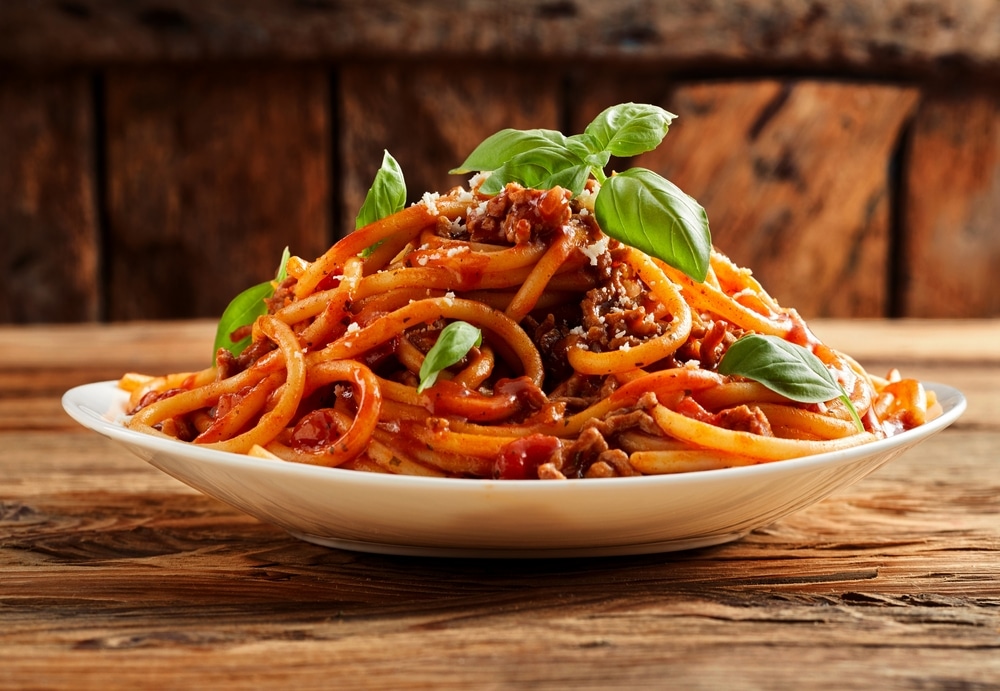
Pasta is one of the favorite dishes of everyone and there is nothing like a well-made plate of Italian pasta. The best thing about pasta is that it’s quick and easy to make. However, many people have been complaining about slimy and sticky pasta and they don’t know what causes this weird texture. So, with this article, we are sharing the reasons behind slimy pasta and how you can fix it!
Why Is My Pasta Slimy?
- Using A Small Pot
When it comes down to preparing or boiling one pound of pasta, you only need four to six quarts of well-salted water. That’s because when the pasta is added to the water, the water loses temperature because the pasta will be cold and pasta will rehydrate and season as it absorbs the salt and water. In addition, the proteins and starch in the pasta start to break down.
So, when you use a small pot for boiling pasta, the water will not be able to come back to the boiling phase quickly and the pasta will have to be in the water for a long time, which changes the texture. In addition to this, using a small pot means insufficient space for the pasta. For this reason, we recommend that you use a bigger pot to boil pasta as it prevents the sticking of pasta (it will create sufficient space for the pasta to boil). Moreover, a huge pot will ensure that water starts to boil more quickly.
- Oil
To boil the pasta, you need only pasta, sea salt, and water. For this reason, to prevent slimy pasta, you have to salt the water properly and make sure the pasta water actually tastes like the sea. In particular, using sea salt helps season the pasta as it begins the water absorption process, resulting in improved flavor. Having said that, make sure you don’t add olive oil to the pot while boiling pasta because it doesn’t prevent pasta from getting slimy.
In fact, it does more harm than good. In addition to this, adding oil means that pasta won’t be able to absorb the sauce. As far as the correct boiling method is correct, it’s recommended that you bring water to a boil, use sea salt to salt the water, and then add pasta. Once you’ve added the pasta, stir it occasionally throughout the boiling process to prevent the slimy texture and clumping.
- The Rolling Boil
There are two types of the boil, including a rolling boil and a gentle boil. A gentle boil happens when the water is hot but not too much. With a gentle boil, the small bubbles will start rising on the water surface and the temperature will be around 96 degrees Celsius. This temperature is enough for people who want to slow-cook the food.
On the other hand, the rolling boil happens when the temperature is 100 degrees Celsius. With a rolling boil, the rolling and fast-moving waves of the bubble will appear in the water pot, which leads to a quicker boiling or cooking process. Having said that, if you want to boil the pasta, make sure you bring the water to a rolling boil, and don’t forget to salt the water before you add pasta to ensure the pasta is boiled well.
- Longer Cooking Time
When you have to prepare pasta at home, it’s common for people to boil it for too long but it’s actually one of the most common reasons behind slimy pasta. In addition, overcooked pasta will have a gummy texture and it won’t be able to retain its shape. For this reason, you have to use the al dente approach, which means the pasta will be firm yet tender to bite. Pasta cooked to al dente means that the body will be able to absorb the proteins and sugars as you consume the pasta, without feeling slimy. All in all, you need to keep checking the boiling pasta and remove the pot from the stove as soon as it’s firm to bite yet tender.
The bottom line is that the slimy pasta ruins the entire experience, which is why we have shared the correct way of preparing the pasta. So, be vigilant while boiling and use the right pot!